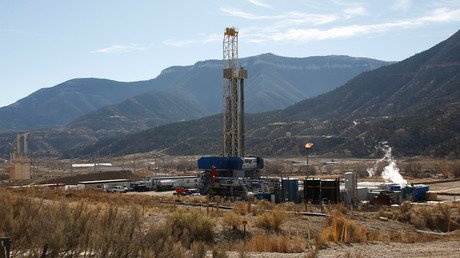The authorities in Oklahoma have shut down 37 wastewater wells used by the fracking industry to extract oil and gas after a 5.6-magnitude earthquake rocked the area on Saturday, equaling the biggest quake to hit the state.
Oklahoma Governor Mary Fallin tweeted that the decision to shut down the wells was a “mandatory directive” and the total area of interest is 725 sq. miles.
The tremor affected the town of Pawnee in the north of the state, while it was also felt over a seven-state area, the United States Geological Society (USGS) reported. Saturday’s earthquake matches the strongest recorded tremor ever to have hit the area, which occurred in 2011.
“Without studying the specifics of the wastewater injection and oil and gas production in this area, the USGS cannot currently conclude whether or not this particular earthquake was caused by industrial-related, human activities,” the agency said in a statement on Saturday. “However, we do know that many earthquakes in Oklahoma have been triggered by wastewater fluid injection.”
In March, the USGS published a report that said fracking was causing man-made earthquakes in parts of the US, with northern Oklahoma at particular risk.
"All of our actions have been based on the link that researchers have drawn between the Arbuckle disposal well operations and earthquakes in Oklahoma," said Matt Skinner from the Oklahoma Corporation Commission, which has been asking wastewater-well users to reduce disposal volumes for the last three years.
"We're trying to do this as quickly as possible, but we have to follow the recommendations of the seismologists, who tell us everything going off at once can cause an (earthquake),” he added, as cited by AP.
Last year, the state recorded 907 earthquakes, and in 2016 there have already been 400. However, in 2009, there were just three quakes that had a magnitude 3.0 and higher, thus showing that fracking has seen a marked increase in the amount of seismic activity in the area.
According to the USGS, 7 million people in America are living in areas that are at risk from man-made earthquakes.
"By including human-induced events, our assessment of earthquake hazards has significantly increased in parts of the US," Mark Petersen, chief of the USGS National Seismic Hazard Mapping Project, said in a statement.
"This research also shows that much more of the nation faces a significant chance of having damaging earthquakes over the next year, whether natural or human-induced."
READ MORE: Significant 5.6 quake hits Oklahoma, strongest in years
Fracking involves shooting a highly pressurized combination of water, sand and chemicals into layers of rocks in order to free up gas and oil buried in the ground. However, the waste water is then deposited into underground wells, which can sit near or on fault lines, which increase the risks of earthquakes.

